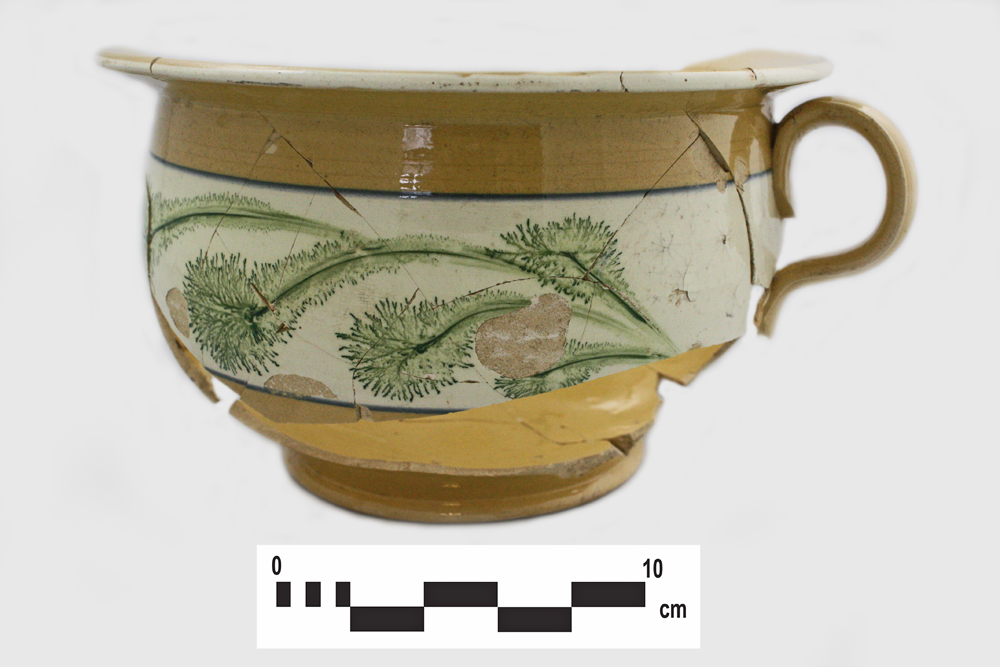Manufacture date : 1790s – early 20th century
Vessels: Bowls, Pitchers, Chamberpots

In the nineteenth-century, these flowing designs were sometimes referred to as “seaweed.” The designs were supposed to resemble moss agate, which is also known as “mocha stone” (Priddy 2004:171). The artist used a brush to release drops of a “mocha tea” solution, with a combination of tobacco, stale urine and turpentine. The design spread instantly into a tree-like pattern when the acidic solution contacted the slip on the vessel.
Mocha factory slip designs may have been used as early as the 1780s, but becomes rather rare on archaeological sites dating after 1850 (Rickard 2006:46).The decoration can be found on on creamware, pearlware, yellow ware, refined white earthenware and occasionally ironstone.









